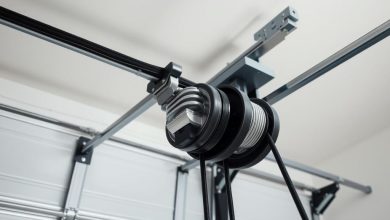
The Main Problems Of Braking System
The braking system is an important part of any car. It is responsible for the safety of all road users. Therefore, it is vital that this component is always in good order and working condition.
Experts recommend regular maintenance of the car, as well as regularly monitor the condition of the main systems, especially if you find enough anxious symptoms. Experienced drivers always carry out preventive maintenance, without waiting for breakdowns and not leading the situation to a critical point.
So, let’s look at what difficulties auto owners usually encounter.

Uneven wear pads
Brake pads – one of the main consumables of the car. They need to be changed regularly to maintain the braking system in working order.
In fact, this component works on a fairly simple principle and gradual wear is considered a natural phenomenon. But when it happens unevenly, it indicates a problem that can come from a variety of nodes.
The most likely causes of the malfunction may be as follows:
- Damage to the piston of the support – one of the main culprits, which comes under suspicion first. Here the main problem is that moisture can enter into this component, which causes it to rust, wedge and constantly pressurizes the shoe;
- Problems with the guides – they are part of the design of the calipers and can also rust, jam, and then exert excessive pressure on the brake shoe. Therefore, these components must be kept clean and lubricated from time to time;
- Anthers – at first glance, they represent an insignificant detail, but at the same time responsible for much. This is a rubber or silicone component of a small size that protects the braking system from the effects of dirt, sand, stones and other debris. If they break, then you can wait for breakdown after a few weeks or even days;
- Souring – may occur due to the drying out of the lubricating fluid, moisture ingress or poor quality of the part itself.
Uneven wear of brake discs
Uneven wear of brake discs is a serious problem, which arises from the severe wear of the pads and their untimely replacement. Further operation of the car in this state leads to the fact that different furrows, scuffs, and other defects will appear on the surface of the discs.
The next stage of wear is the complete erasure of the frictional surface, after which the role of the main working tool during the braking process is assumed by the metal substrate, which will also deform with time.
Further from the braking system will begin to hear a distinct beat, noise, the braking distance will be lengthened. If such symptoms occur, you should contact a specialist who will repair the brake discs or replace the main components – depending on the degree of wear.

Corrosion of components
The development of corrosion in the braking system – a frequent phenomenon. This is due to the location of these components, which during operation are often exposed to dirt or precipitation. Sometimes the rusting processes are associated with the oxidation of certain metal parts, which is why they begin to stick to each other.
In any case, corrosion reduces the mobility of the components of the braking system. In this regard, there are extraneous noises, vibrations, mechanisms are wedged and unevenly worn out. To avoid this, they must be cleaned regularly of dirt, and also change the lubricant on all the guides.
Wear box wear sensor wiring of the braking system
This situation can occur due to mechanical damage or because the wear sensors could be confused during installation. In either case, a special signal will be signaled about it, which will light up on the dashboard. If you ignore this signal, the brake pads will be very hard to wear and can disable other components of the system. To avoid this, contact a specialist who simply installs a new set of sensors.

Low level of brake fluid or leakage
Brake fluid is an important element of the brake system, which helps prevent premature wear of parts. Therefore, it is necessary to monitor its level. If it began to drop sharply and rapidly, this may indicate excessive wear of the discs or pads, as well as a breach of the system’s tightness.
According to the rules, the brake fluid changes every two years, but to be sure, specialists use a special device to change the boiling temperature and obtain reliable information about the condition of the lubricant. This will help determine whether an urgent replacement is required or not. For information on which product is suitable for your machine, refer to the operating instructions.
Vibrations accompanied by noise
There are also such situations when in the braking system there is extraneous noise immediately after the installation of new shoes. This problem can be associated with any adjacent component: pads, discs, silent blocks, shock absorbers, etc. Just new parts begin to contact their “neighbors” and react with them. To do this, you need to carefully check the system and find the source of noise in order to eliminate it. Sometimes the problem is elementary and is associated with tightened nuts.






